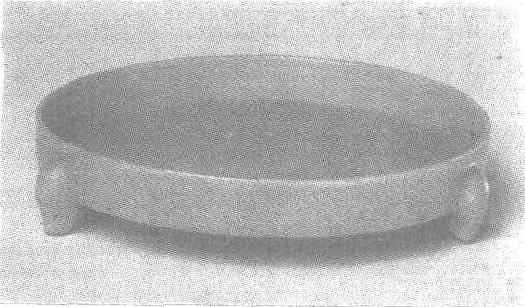汝窑青釉三足瓷洗
北宋。高3.6厘米,口径18.3厘米。北京故宫博物院藏。洗,盛水洗笔之器。此洗广口,直壁,平底,下承三足。胎质细密,色灰褐。器内外施淡青色釉,光泽莹润,并开黑色不规则片纹。底部有窑具支烧时留下的五个细小支钉痕,并刻有下列诗文:“紫土陶成铁足三,寓言得一此中函,易辞本契退芷理,宋诏胡夸切事谈。”落款为:“乾隆戊戌夏御题。”下铭方印二。乾隆戊戌年即乾隆四十三年(公元1778年)。汝窑见“‘寿成殿皇后阁’汝窑青釉瓷盘”条目。

| 词条 | 汝窑青釉三足瓷洗 |
| 类别 | 中文百科知识 |
| 释义 | 汝窑青釉三足瓷洗北宋。高3.6厘米,口径18.3厘米。北京故宫博物院藏。洗,盛水洗笔之器。此洗广口,直壁,平底,下承三足。胎质细密,色灰褐。器内外施淡青色釉,光泽莹润,并开黑色不规则片纹。底部有窑具支烧时留下的五个细小支钉痕,并刻有下列诗文:“紫土陶成铁足三,寓言得一此中函,易辞本契退芷理,宋诏胡夸切事谈。”落款为:“乾隆戊戌夏御题。”下铭方印二。乾隆戊戌年即乾隆四十三年(公元1778年)。汝窑见“‘寿成殿皇后阁’汝窑青釉瓷盘”条目。
|
| 随便看 |
开放百科全书收录579518条英语、德语、日语等多语种百科知识,基本涵盖了大多数领域的百科知识,是一部内容自由、开放的电子版国际百科全书。